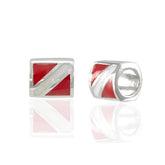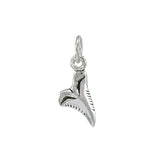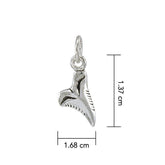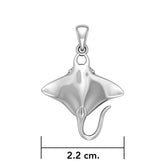Maximizing Retail Profitability Through Specialized Dive Jewelry Displays
Introduction: The Significance of Dive Jewelry in Retail Environments
In the competitive world of retail, especially within niche markets such as scuba diving and nautical lifestyle stores, identifying supplementary revenue streams is essential for sustained success. This chapter explores the strategic integration of specialized dive jewelry displays into retail spaces, as presented by Captain Peter Kozlovsky, President and CEO of Dive Silver by Peter Stone Jewelry. With over three decades of experience operating 15 stores and a profound personal connection to the diving community, Kozlovsky offers a comprehensive guide to leveraging customizable, space-efficient jewelry displays that not only enhance store aesthetics but also significantly boost profitability.
The jewelry line discussed centers on sterling silver pieces inspired by marine life and dive culture, including pendants, rings, earrings, and body jewelry. Key concepts such as impulse buying, product customization, and environmentally sustainable materials are emphasized. This approach transforms what might seem like a simple accessory sales tactic into a robust, scalable business strategy, creating an additional income stream that dovetails seamlessly with existing dive shop inventories.
Section 1: The Value Proposition of Dive Silver Jewelry Displays
Captain Kozlovsky introduces the jewelry display concept by underscoring its simplicity and profitability. Unlike complex dive computers or large wall displays, these jewelry stands are compact (less than one square foot), easy to assemble, and designed for high-visibility placement near the cash register—a prime location known to stimulate impulse purchases.
- Key Features of the Jewelry Displays:
- Dimensions: Approximately 8x9 to 11x11 inches, ideal for countertop placement.
- Material: Crafted from Robert Wood, a renewable resource, reflecting the brand’s commitment to environmental sustainability.
- Modular Design: Easy assembly with minimal tools (two screws), facilitating quick setup.
- Variety: Multiple display types, including pendants, earrings, rings, body jewelry, and toe rings.
The displays are positioned as an investment in the retailer’s own business, leveraging their intimate knowledge of local customer preferences. For example, shops in the Florida Keys might focus on turtles, dolphins, and coral-themed pieces, while stores elsewhere can customize according to their environment or customer interests.
- Business Insight:
- Kozlovsky highlights that retail owners are best positioned to choose product mixes that resonate locally, thus increasing sales potential.
- The jewelry collection serves both as a celebration of dive accomplishments and as an everyday wearable reminder of customers’ passion for the ocean, which fosters emotional attachment and repeat purchases.
Section 2: Product Range and Customization Options
Dive Silver offers a curated selection of jewelry that appeals broadly to dive enthusiasts and beachgoers, extending beyond purely dive-related themes to include nautical and tropical motifs. This diversification allows retailers to target a wider customer base, including those who appreciate the maritime lifestyle without being active divers.
- Product Categories:
- Dive-related jewelry: Dive master rings, dive line pendants, and charms symbolizing diving achievements.
- Nautical sea life jewelry: Items inspired by ocean creatures and marine environments.
- Body Jewelry: Includes a full collection of dive-themed body jewelry, which was introduced in response to customer demand.
- Toe Rings: Marketed as ideal impulse buys at beachside locations.
Each display is designed for flexibility, capable of holding dozens of unique designs. For example, one display accommodates 32 different designs of earrings and pendants, while the ring displays hold 36 rings. The compact nature allows for significant inventory variety without requiring extensive retail space.
- Customization Strategies:
- Retailers can mix and match pendants, earrings, and chains to tailor to customer preferences.
- Bundling offers such as “buy a pendant and chain, get the chain half price” or “three for a discount” are suggested to increase the average transaction value.
- The displays facilitate cross-selling by encouraging customers to buy multiple complementary items (e.g., pendant plus chain plus earrings).
Section 3: Sales Techniques and Pricing Strategies to Boost Revenue
An essential part of the business model is the use of pricing tactics designed to maximize sales volume and customer satisfaction. Kozlovsky advocates for bundle pricing and promotional deals, which create a sense of value and encourage customers to purchase more than one item.
-
Pricing Examples:
- Toe rings, typically priced at $10-$15 each, can be sold as a set of three for $29 to $30, promoting higher sales volume.
- Such bundle pricing is described as an effective strategy to increase the average sale size, making individual items more enticing when combined.
-
Sales Psychology:
- The jewelry is positioned as an impulse buy, strategically placed near checkout counters to capitalize on last-minute purchasing decisions.
- The emotional appeal is emphasized: customers often buy jewelry as gifts during vacations or as souvenirs, reinforcing the store’s brand and their memories of diving or beach experiences.
-
Retail Outcomes:
- Kozlovsky conservatively estimates that jewelry sales through these displays can add $30,000 to $50,000 annually to a store’s bottom line.
- In busy seasons, daily sales of $100 to $400 are typical, with potential to reach $1,000 in peak times.
- The added income stream provides retailers with greater financial freedom and the ability to invest back into their business or personal life goals.
Section 4: Environmental Responsibility and Production Background
An important dimension of Dive Silver’s brand identity is its commitment to environmental stewardship. The jewelry components are manufactured in Thailand, with a production ethos that respects sustainability and avoids deforestation.
-
Material Use:
- The use of Robert Wood, a renewable hardwood, aligns with eco-friendly values.
- Jewelry is made from sterling silver, valued for both its beauty and durability.
-
Supplier Expertise:
- Kozlovsky describes the Thai team as “second to none,” reflecting trust and pride in the craftsmanship behind the pieces.
- This collaboration ensures high-quality products that reflect the beauty and spirit of the ocean, enhancing customer appreciation and perceived value.
Section 5: Marketing Support and Retailer Resources
Beyond providing the physical jewelry and displays, Dive Silver supports retailers through extensive marketing and educational resources.
-
Catalogs and Price Lists:
- Retailers receive downloadable PDF catalogs featuring the full collection.
- Price lists accompany catalogs, enabling easy pricing and inventory management.
-
Promotional Materials:
- Free signage and door stickers enhance store visibility and advertise the availability of Dive Silver products.
- The company offers online account sign-ups for wholesale pricing, simplifying the ordering process.
-
Customer Engagement:
- Kozlovsky encourages retailers to think strategically about how jewelry fits into their overall business goals, including freeing up time and increasing income for personal and family benefits.
Conclusion: Harnessing Dive Jewelry to Transform Retail Profitability
Captain Peter Kozlovsky’s presentation offers a detailed blueprint for dive shops and related retailers to capitalize on a niche yet lucrative product line. By incorporating customizable, small-footprint jewelry displays, retailers can attract impulse buyers, encourage multiple-item purchases through bundling, and generate an additional $30,000 to $50,000 in annual revenue with minimal operational complexity.
The combination of environmentally sustainable materials, high-quality craftsmanship, and targeted marketing support differentiates Dive Silver’s offerings in the marketplace. Moreover, the emotional connection customers feel toward dive and nautical-themed jewelry fosters brand loyalty and repeat business.
Ultimately, this strategy not only enhances a store’s profitability but also aligns with broader goals of personal freedom and work-life balance, as retailers gain more financial resources and flexibility. Kozlovsky’s experience and insights make a compelling case for why integrating a dive jewelry line is not merely a sales tactic but a transformative business decision.
Advanced Bullet-Point Summary
- Captain Peter Kozlovsky, with extensive retail and diving experience, presents a jewelry display solution targeting dive shops.
- Jewelry displays are compact (less than 1 sq. ft.), easy to assemble, and designed for high visibility near checkout points.
- Jewelry is made from sterling silver and Robert Wood, a renewable resource, promoting environmental sustainability.
- Product range includes dive master rings, pendants, earrings, body jewelry, and toe rings with nautical and tropical themes.
- Displays are modular and flexible, holding dozens of designs, enabling retailers to customize assortments based on customer preferences.
- Pricing strategies focus on bundle deals (e.g., buy pendant and chain with discounts) to increase average transaction values.
- Toe rings sold as impulse buys in bundled pricing foster larger sales volumes.
- Estimated annual additional revenue is $30,000 to $50,000, with daily sales ranging from $100 to $1,000 in busy seasons.
- Dive Silver supports retailers with downloadable catalogs, price lists, free signage, and wholesale account options.
- The brand emphasizes sustainability, with products crafted in Thailand by expert artisans.
- Jewelry fosters an emotional connection with customers, promoting brand loyalty and souvenir-style purchases.
- Kozlovsky encourages integrating jewelry displays as a strategic, low-complexity business enhancement to increase profits and personal freedom.






